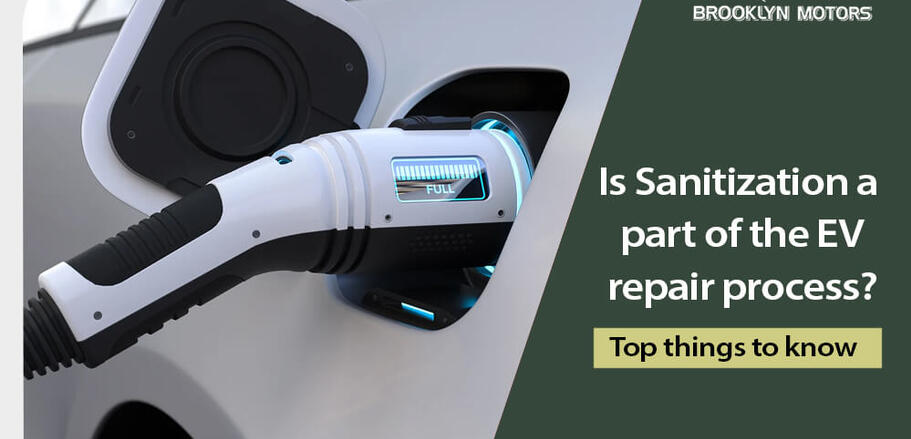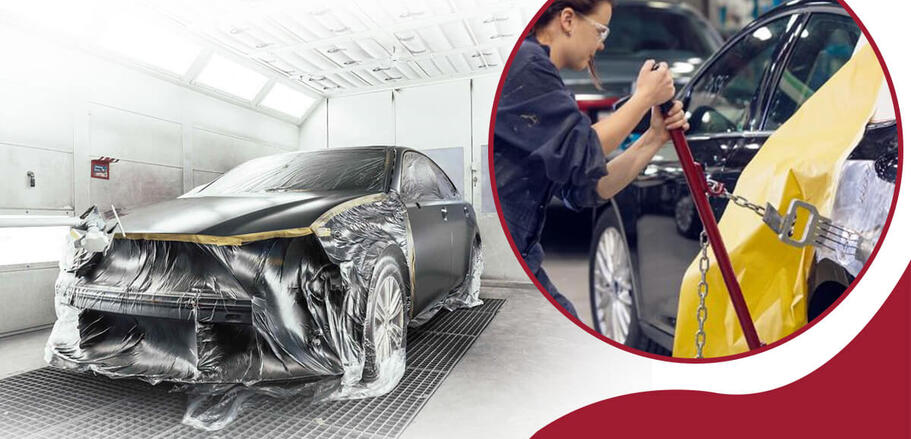
 March 28, 2024
March 28, 2024We're all familiar with the importance of keeping the insides of our gas-powered cars clean. From vacuuming up crumbs to wiping down surfaces, basic interior detailing helps vehicles stay fresh. But what about electric vehicles (EVs) - do they require any special sanitization during repair or maintenance work?
Understanding high-voltage components
One key distinction with EVs is the presence of high-voltage components like the large traction battery pack and connections to the electric motor. While not necessarily "dirty" in the traditional sense, these components do require specific safety protocols during repair situations.
Isolating the high-voltage system
Whenever an EV repair technician needs to access the high-voltage system, rigorous isolation procedures must be followed. This involves safely deactivating the high-voltage circuitry and ensuring no lingering electrical potential. Only after this process can sanitization or other work commence.
Sanitizing workspaces and components
In addition to the high-voltage components themselves, the areas around where repairs take place need to be kept clean too. Maintenance technicians for EV specialized auto body shop near me will thoroughly clean repair benches, tools, carts, and anything else involved with disassembly. Components like battery packs may be sanitized before reassembly as well.
Cleaning and detailing the interior
Just like a gas car, the interior cabin areas of an EV can accumulate dirt, debris, stains, and odors over time. During major repair work involving removing large components, it's common practice to thoroughly clean and detail the exposed interior areas too. Vacuuming, steaming, shampooing – the complete detailing regimen.
Sanitization for electric powertrains and motors
While there's no exhaust system or typical "engine bay" to clean, electric motors and surrounding components still require periodic sanitization. Repair shops for EV car repair near me use specialized degreasers, cleaning solutions, and tools to ensure these areas stay shipshape.
Taking sanitization seriously
Overall, certified repair facilities do incorporate comprehensive sanitization practices into their EV repair and maintenance protocols. Given the complex high-voltage systems involved, keeping everything scrupulously clean is of paramount importance for safety and longevity.
The next time you bring your electric vehicle in for service, you can feel confident that expert-level sanitization will be part of the process. After all, today's EVs are marvels of cutting-edge technology deserving of a spotless repair environment!

 February 25, 2024
February 25, 2024Primers and surfacers are essential pre-paint products used in EV auto body repair. Primers provide an improved surface for paint adhesion and prevent future corrosion. Epoxy primers offer excellent adhesion and durability on plastic and composite surfaces.
Surfacers, or body fillers, even out minor imperfections and damage on the exterior body. Polyester or lightweight fillers are ideal for EV repair. High-build primers and surfacers make the body surface smooth and paint-ready.
Basecoats
Basecoat paint provides color and is applied after the primer. Basecoats for EVs are specially formulated for plastic and composite materials. Waterborne acrylic urethane basecoats offer vibrant color matching and metallic finishes with an eco-friendly formula.
Basecoats for EVs need maximum flexibility to prevent cracking on plastics. 2K acrylic and polyurethane basecoats provide brilliant gloss and durability. Multiple coats may be applied for full, even coverage. The color shade needs precise matching to OEM factory specifications. You can search with an EV auto body near me and find out the type of paint used by them.
Clear coats
Clear coat paint gives the finish its final glossy shine and protection. It is layered over the colored basecoat. A high-quality polyurethane or acrylic urethane clear coat provides scratch resistance and UV ray protection from sun exposure.
Some clear coats offer ceramic properties for added durability. Flexible clear coats are required to prevent cracking on plastic EV parts. Multiple clear coat layers may be applied for increased gloss and depth. Proper clear coat application results in a flawless, smooth, professional-level finish.
Specialty coatings
Some EVs use additional specialty coatings. Anti-chip coatings prevent minor gravel damage on vulnerable areas like fenders and hoods. Matte finishes have flatter, non-glossy clear coats. Vinyl wrap coatings allow bold printed graphics.
Paint protection film, or PPF, is a clear urethane applied to high-impact regions. Proper application of these specialty coatings protects the EV's appearance and value.
Following OEM procedures using the right primers, basecoats, clear coats, and specialty coatings allows EV auto body technicians to achieve a factory-perfect, long-lasting finish repair. With an EV specialized auto body near me, you can make your car shine like new again.
 2575 Stillwell Ave,
2575 Stillwell Ave, 






